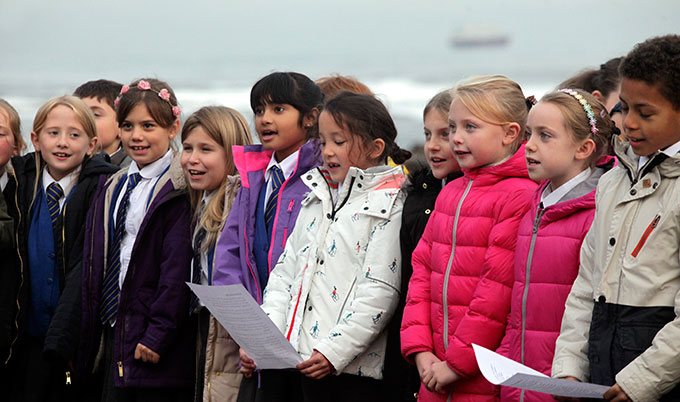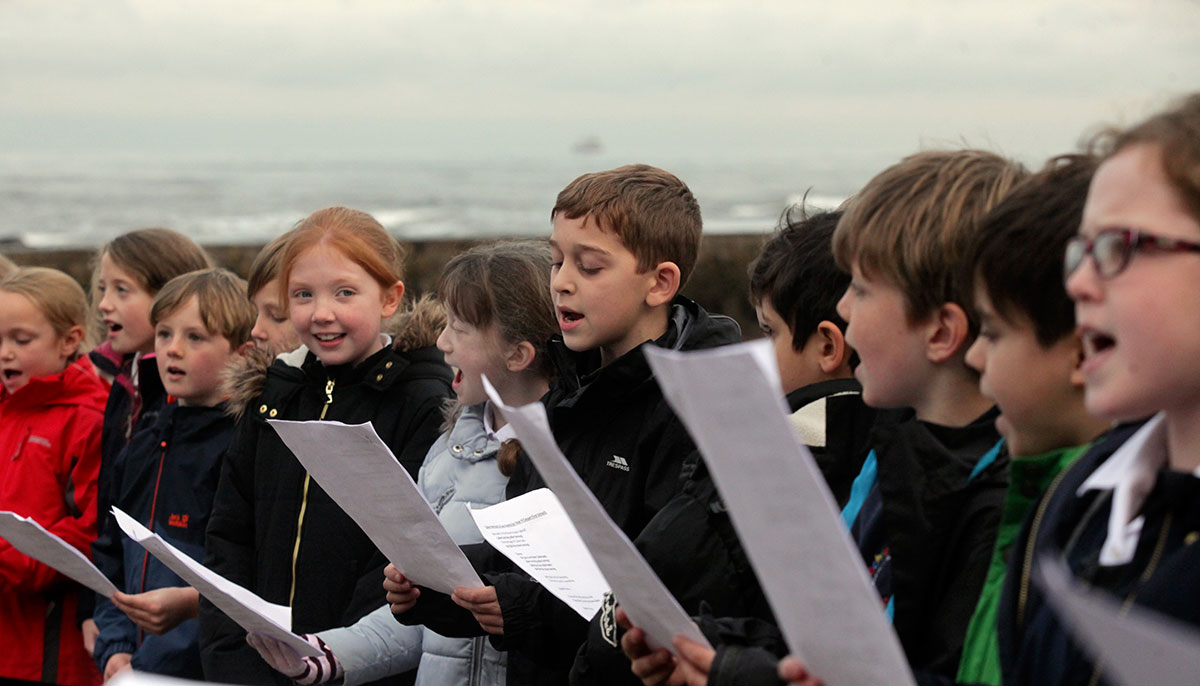Cullercoats maritime schools
Local schools celebrate their maritime heritage
Published on: 10 November 2016
Local schoolchildren have explored their maritime heritage with help from experts at Newcastle University.
Celebration event
Over the last five weeks, year four pupils at Cullercoats Primary School and Coquet Park First School, Whitley Bay, have been investigating the history and fishing heritage of Cullercoats.
Working with experts at Newcastle University’s Dove Marine Laboratory, they have learned about topics such as traditional fishing methods, the distinctive wooden coble boat, and the buildings built to support the fishing industry in Cullercoats including Simpson Street, the last remaining fishermen’s cottages in the village.
The schoolchildren also spoke to retired fishermen and learned traditional skills such as how to make a lobster pot and even gutted and salted their own herrings.
The project included a Rocky Shore Ramble where the children explored Cullercoats bay with Newcastle University marine scientists and learned about the different types of animals that live there and how to identify them.
A celebration event for their families and the local community took place this week when the children created a 3D model of Cullercoats harbour complete with local landmarks such as Simpson Street, and sang sea shanties they wrote themselves with the help of traditional music expert Ian McKone.

Bringing history and science together
Annie Russell, Senior Marine Education Officer, Newcastle University, said: “This project has brought history and science together and given the children a different way to learn about the historic and marine environment where they live.
“Some of the children realised that’ve got fishing connections in their own families, so it’s been fantastic to see parents and the wider community get involved, with many sending us photos and stories of their memories of Cullercoats.”
Aled Jones, teacher at Cullercoats Primary School, added: “The children loved the hands-on nature of the sessions and have learned so much about the history of Cullercoats it’s made them feel much more part of the local community. The project has changed what they think about where they live as they’ve been able to use what they’ve learned as they go around the village.”
Coquet Park First School pupils Jasmine and Thomas commented on how much they enjoyed taking part in the project. “I had an amazing time at the Dove Marine. My favourite part was gutting the fish as that was something that I had never done in my life! I also loved sketching the houses and boats from the olden days,” said Jasmine, aged eight. “I loved going to the Dove Marine especially when we had to gut a fish! I really enjoyed writing and singing a sea shanty,” added Thomas, also aged eight.
Exploring heritage on the doorstep
The project was funded by Historic England, as part of its Heritage Schools project which gives schoolchildren a range of opportunities to learn about the history of the area where they live. Once the project is complete, the schools will be awarded Heritage School status and will develop their own ongoing programme to integrate what the children have learned with the wider curriculum.
Viki Angel, Local Heritage Education Manager, Historic England, said: “The children have really enjoyed exploring the history on their doorstep. The practical sessions bring the history of the local area alive for them helping them learn more about how Cullercoats has changed over time, so that they can be proud of where they live.”




